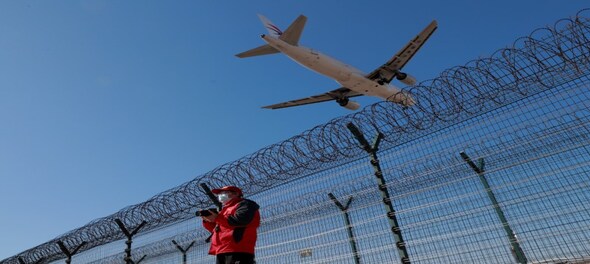
Sustainable flying has been in focus for the aerospace industry for some years, and we are now witnessing a renewed sense of urgency not only with industry stakeholders but Society itself, which is driving towards a cleaner environment. Stakeholders across the industry are developing new technologies and operating practices to maximise energy efficiency and reduce carbon emissions. That’s why, ensuring our current and next-gen aviation propulsion technologies are more efficient and support sustainable aviation fuels (SAFs), including biofuels, is important.
Hydrogen-fueled and electrically-powered aircraft are among the most exciting technological concepts being considered today. They have the potential to drastically reduce or even eliminate CO2 emissions in the future. These technologies are already being demonstrated on small-scale aircraft, so we are well on the way for applications on regional airliners by the late 2030s.
If and when hydrogen emerges as the preferred aviation fuel of the future, jet engine technology will still be central to aircraft propulsion, and it is in fact very well suited for hydrogen combustion. The main challenge arises from hydrogen’s much lower volumetric energy density compared to standard jet fuel—you need four times as much space to carry the same amount of energy —so this requires significant changes to aircraft design. As an industry, we will also need to scale up the hydrogen production infrastructure, especially from renewable energy sources, to ensure the fuel is a truly “green” alternative.
Need of the hour: SAFs and efficient propulsion
As these emerging technologies will take time to mature, we also need to look for bridge solutions for the aircraft flying today and over the coming decades—and that’s where SAFs and efficient jet engines come in! Currently, 80 percent of aircraft CO2 emissions come from flights of more than 1,500km, which will continue to rely on larger commercial aircraft powered by jet propulsion. The latest generation of commercial jet engines are already delivering 15-20 percent better fuel efficiency than their predecessors, effectively saving millions of tonnes of CO2 in savings over their lifetimes.
This carbon footprint can be further reduced through the increased adoption of SAFs. SAFs are a “drop-in” solution, meaning they do not require any modifications to aircraft or fuelling infrastructure. SAFs are currently certified for use in jet engines at up to a 50 percent blend with kerosene, and with further on-testing and standard-setting, we should be able to increase this up to a full 100 percent replacement of standard jet fuel. However, availability, price and demand for SAF are still challenges to overcome. SAF production today addresses less than 0.1 percent of global jet fuel demand, so investment from government and industry stakeholders will be needed to expand production infrastructure, and make SAFs a competitive solution for airlines in the near and medium-term.
Let us also not forget that jet engine technology still has the potential to deliver further gains in fuel efficiency and reduced emissions. We are only halfway to the theoretical limit of the jet engine’s thermal efficiency. With more advanced materials that allow engines to operate at higher temperatures, and using ultra-efficient geared fan drive systems, we will be able to extract even more usable energy from every drop of fuel. As we also evolve our understanding of electric aircraft propulsion systems, hybrid-electric configurations could be used to optimise a jet engine’s performance further.
Can India show the world the way?
India’s commercial airliner fleet continues to grow with new and efficient aircraft, which will help reduce passenger CO2 emissions over many years. With the government and industry’s current efforts to develop new routes in the regional market, we can well imagine this market will have matured by the time smaller hydrogen-fueled and electrically-powered aircraft take to the skies in the 2030s. Airline operators will require efficient aircraft eventually in order to make connectivity affordable and sustainable. This creates a great opportunity to drive policy towards accelerating SAF uptake in the short term, and then have a roadmap in place for emerging technologies like hybrid-electric and Hydrogen-fueled aircraft in the longer term. There is certainly an opportunity for India, as one of the fastest-growing aviation markets, to lead the way.
To meet its green targets, we have already seen India push hybrid and electric vehicles on the ground for public transport and slowly switch to non-fossil fuels or renewable resources for public transport projects. With the right focus and incentives, India might be able to drive a similar transition to green aviation technologies.
—Ashmita Sethi is President and Country Head, Pratt & Whitney. The views expressed in the article are her own
(Edited by : Ajay Vaishnav)
Check out our in-depth Market Coverage, Business News & get real-time Stock Market Updates on CNBC-TV18. Also, Watch our channels CNBC-TV18, CNBC Awaaz and CNBC Bajar Live on-the-go!


Prajwal Revanna's father in custody for alleged kidnapping and sexual abuse
May 4, 2024 7:53 PM
Delhi, Indore, Surat and Banswara — why these are the most challenging domains for Congress internally
May 4, 2024 1:53 PM
Congress nominee from Puri Lok Sabha seat withdraws, citing no funds from party
May 4, 2024 12:00 PM
Lok Sabha Polls '24 | Rahul Gandhi in Rae Bareli, why not Amethi
May 4, 2024 9:43 AM

